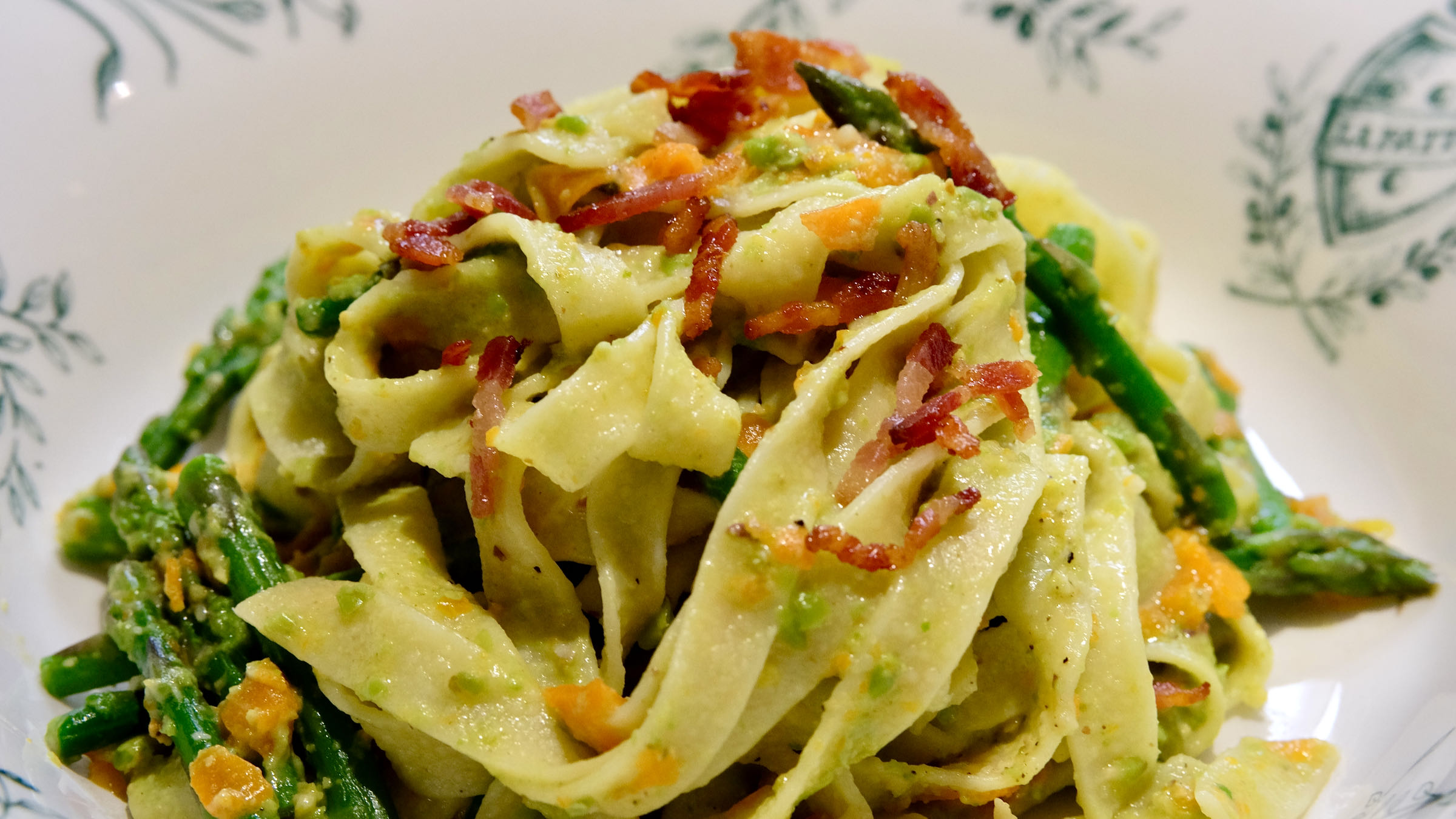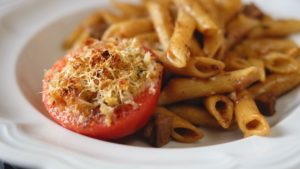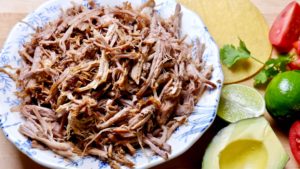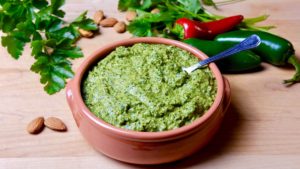What dish could better represent Spring than primavera, a combination of pasta and vegetables enhanced with a creamy sweet pea and pistachio pesto sauce.
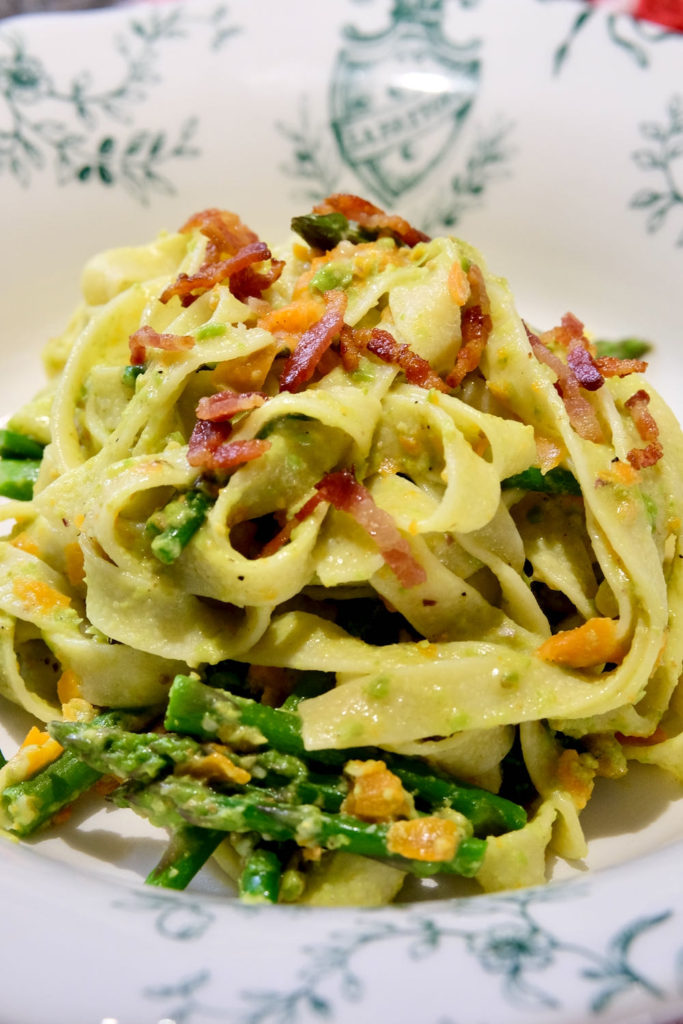
Primavera is Italian for Spring. Generally, Pasta Primavera is served with fresh spring vegetables. However this pasta recipe fetches fresh spring flavor from the sauce as well. As sweet peas are transformed into a rich creamy pesto sauce.
Pea Pesto creates a healthy creamy Primavera sauce to serve with any type of pasta.
Whether you choose to use your favorite pasta shape, fettuccine noodles or egg noodles, incorporating vegetables helps to keep this pasta dish light and healthy. The addition of asparagus spears and carrot curls is a simple way to add sweet flavor and texture. And to help keep cooking simple, the vegetables cook in the same pot with the pasta!
Additionally, this pasta recipe uses spring vegetables to create a flavorful yet untraditional primavera pesto sauce. Here you will find that peas bring sweet creamy texture to this sauce. And they do so without the use of cream or butter. Pistachios are added to the pesto for their sweet nutty flavor. For extra character and texture, the finished dish is garnished with crispy bacon bits. Or for a vegetarian option, the dish may be garnished with Toasted Breadcrumb Gremolata or a nice shower of Parmesan cheese.
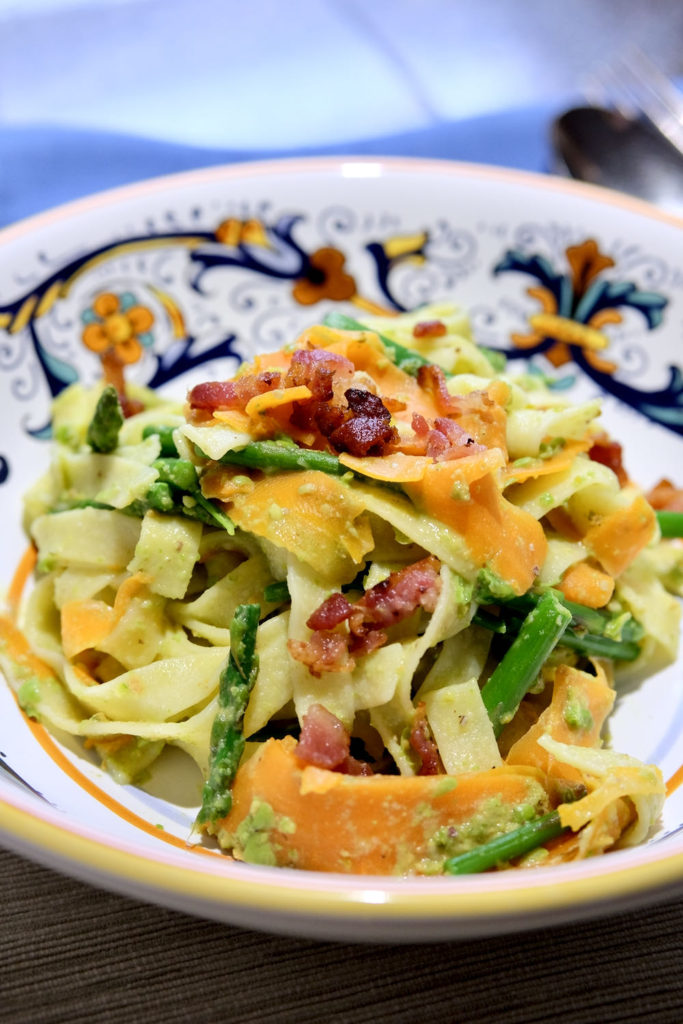
Primavera Pesto uses fresh Spring peas.
Not only is this one of the easiest pesto recipes you will ever make but it is one of the healthiest as well. While most pesto recipes require a lot of olive oil to create a creamy texture, this pesto sauce develops a creamy finish produced by pureeing peas. And what could be more effortless than blending pistachio and peas in a food processor. There is no need to wash and dry leafy greens like basil or parsley and no need to peel garlic.
Primavera (Spring) brings bright fresh vegetables to pasta.
As Spring is upon us, so is the arrival of fresh seasonal vegetables. While fresh vegetables and pasta are the mainstay of this recipe, the sauce is also created by using peas. This pasta recipe truly represents the essence of la primavera.
While carrots are available all year, the new season brings an abundance of delicious sweet carrots. And with the arrival of Spring, comes fresh asparagus spears and pods of sweet peas. However, I find that using frozen sweet peas are much easier to use. But if you have peas growing in the garden, by all means use them.
Although spring is in the name, this dish may be prepared all year round, as it uses frozen peas. Sometimes it’s difficult to find fresh asparagus in the winter. If so, try substituting with broccoli or snap peas.
The Asparagus
When choosing asparagus spears, look for smaller younger spears. For the most part, young asparagus spears are tender and sweet. Additionally, young spears will cook much quicker. Look for asparagus spears that are thin of stature.
In order to remove the woody stalks, gently hold the tip end just below the flowery head between your right thumb and index finger. In the same manner, hold the cut end of the spear between your left thumb and index finger. Gently bend the asparagus and let it snap off. The spear will naturally snap away from the woody stem at its’ most tender point.
Rinse the spears under cold running water while gently rubbing the tips. This step will help to remove any sandy residue. In addition to rinsing, I like to soak the cleaned spears in a bowl of cool water until cooking time. When ready to cook, pour off the soaking water and let drain.
The Carrots
When shopping for carrots, look for large thick carrots. While thinner carrots will work, big carrots produce nice long shaved curls that cook evenly. As for big carrots I’m referring to carrots that have a diameter of half dollar, or larger. Do not try to create carrot shavings with baby carrots, you will likely lose a finger. Once again, if large carrots are unavailable, use normal sized carrots .
To create the carrot curls, begin by peeling away the outher layer of the carrot. Continue peeling the carrot exposing bright clean flesh. Trim away the root and the top. Firmly grasp the root end of the carrot in one hand. With a vegetable peeler in the opposite hand, make the first curls by starting in the center of the carrot and peeling towards the top, away from you. Make at least two more curls in the same manner. After making three to four curls, turn the carrot 1/4 of a turn in one direction to expose unshaved carrot. Repeat making curls as outlined above. Continue around the carrot until the top half of the carrot beings to look square. Now you can continue to make curls by continuing to shave from the squared off sides.
When the carrot becomes to thin to shave any further, turn the carrot in your hand and hold the shaved end. Now the shave the root end of the carrot in the same manner as the top half.
Bacon or Gremolata
To create a blast of salty, savory flavor garnish the dish with bacon bits. However there are other options. Perhaps you would like to add a zesty flavorful finish by garnishing with Toasted Breadcrumb Gremolata. Both options are delicious. Or perhaps you’d prefer with a light dusting of Parmesan cheese.
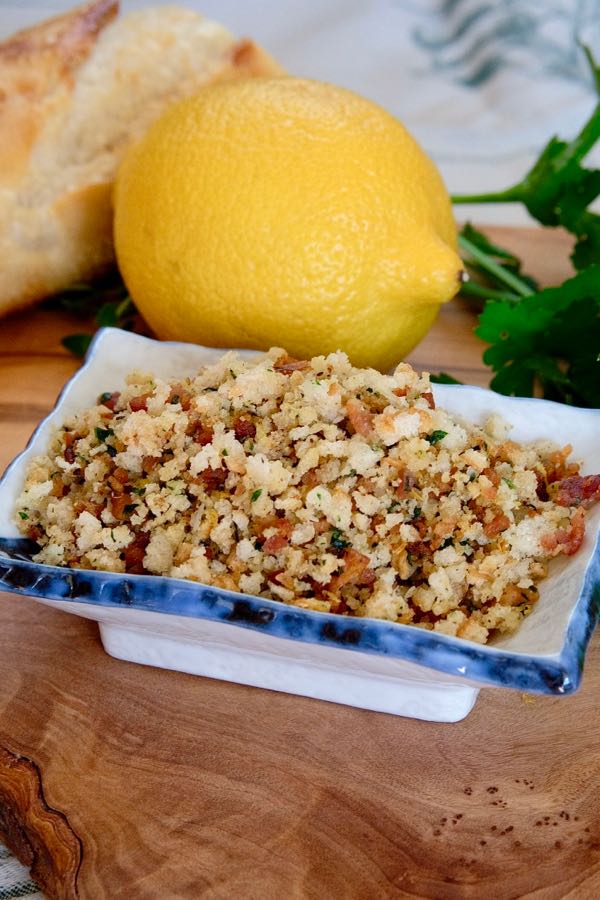
A 1 1/2 Cups Serving with bacon crumbles is 12 WW Smart Points or 313 calories served with bacon crumbles.
While a 1 1/2 Cup Serving without bacon crumbles is 11 WW Smart Points or 261 calories.
Buon Appetito!
PrintPasta Primavera with Pea and Pistachio Pesto Sauce
This healthy Spring pasta dish is served up with vegetables and a Sweet Pea and Pistachio pesto sauce. For an added blast of flavor garnish with Toasted Breadcrumb Gremolata or bacon crumbles.
- Prep Time: 20 minutes
- Cook Time: 10 minutes
- Total Time: 30 minutes
- Yield: 4 Servings 1x
- Category: Pasta Entree
- Method: Stove Top
- Cuisine: Italian
- Diet: Low Calorie
Ingredients
PESTO INGREDIENTS:
- 1/4 cup (40 grams) Pistachio Nut Meat, roasted and salted
- 1 cup Frozen Peas (130 grams), slightly defrosted
- 3 Cloves Roasted Garlic (9–10 grams)
- 1/2 teaspoon Kosher Salt
- 1/4 teaspoon Black Pepper, ground
- 2 teaspoons (10 grams) Lemon Juice
- 1/4 cup (50 grams) Broth, Vegetable or Chicken
- 6 teaspoon (30 grams) Olive Oil, divided
- 1 1/2 ounces (50 grams) Uncooked Bacon, cut into thin strips (Optional)
PASTA INGREDIENTS:
- 1 Tablespoon Salt for Pasta Water
- 8 ounces (228 grams) Asparagus, cleaned and cut into 2-inch pieces
- 7 ounces (200 grams) Carrots, shaved into ribbons (about 3 large)
- 8 ounces ( grams) Egg Noodle, or pasta of your choice.
- 1/4 cup Broth, Vegetable or Chicken
- 1/2 cup (1 ounce or 30 grams) Parmesan, finely grated
- Garnish with reserved bacon strips if desired (Optional)
- Additional Parmesan cheese to serve table side
Instructions
FOR THE PESTO SAUCE:
- Place pistachio meat in the bowl of a food processor and blend until fine, about 1-2 minutes
- Place peas, garlic and 2 teaspoons of olive oil (10 grams), lemon juice, salt, pepper and broth into the work bowl along with the ground pistachios. Blend until peas are smooth and creamy, about 2-3 minutes.
- Remove from food processor and set aside.
Yields: 1 Cup of Pea Pesto Sauce.
FOR THE PASTA:
- If using bacon,* cut the bacon into thin strips by cutting across the width of the bacon and not the length. * It should be noted that the bacon is used only for garnishing the dish. If following a vegetarian diet, simply omit.
- In a large skillet cook the bacon until crispy and well rendered.
- Remove bacon from pan and set aside on a paper towel lined plate.
- Drain off all excess fat from the skillet and wipe clean with a paper towel.
- Place a large pot of water on the stove for cooking pasta. Heat the pot over high heat bringing the water to a boil.
- Meanwhile, rinse the asparagus and cut into 2 to 2 1/2 inch pieces.
- Scrape carrots clean and shave into ribbons, using a vegetable peeler. I have found that when shaving the carrots it is easiest to take 2-3 swipes and then turn the carrot 45 degrees. After making a complete rotation around the carrot, it will begin to take on a square shape. Continue making ribbons, by making several swipes of each squared side until the carrot becomes too flimsy. When the carrot becomes too wobbly and thin to peel any further, turn the carrot in your hand, holding the freshly cut square. Continue making ribbons on the remaining half of carrot.
- Once the water comes up to a boil, add the salt and stir to combine.
- Add the pasta and cook according to the package directions. Generally egg noodles will take about 8 minutes to cook. Allow the noodles to cook in the boiling water for 6 minutes.
- Immediately add the asparagus and stir to combine.
- About 30 seconds later, add the carrot ribbons and allow the vegetables to cook with the noodles for a total of 2-3 minutes.
- Immediately drain off all of the water or retrieve the pasta and vegetables using a spider or thongs. Place the noodles into the skillet in which the bacon was cooked.
- Place the skillet over low heat and add the pea pesto, remaining 4 teaspoons (20 grams) olive oil and remaining 1/4 cup of broth. The heat is added to help keep the pasta warm while tossing with pesto. There is no need to cook any longer.
- Toss to combine until the pesto has coated all of the pasta and vegetables.
- Remove from the heat and sprinkle with the Parmesan cheese tossing once again to incorporate.
- Divide in to pasta bowls and serve immediately.
- Garnish with bacon bits if using. For a vegan option, garnish with Toasted Breadcrumb Gremolata.
- Serve with additional Parmesan cheese.
Nutrition
- Serving Size: 1 1/2 cups

